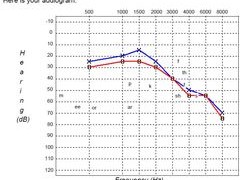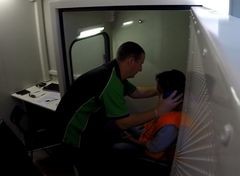Workplace Audiometric Testing
A person at a workplace who is frequently required to use Personal Hearing Protection (PHP) to reduce the risk of hearing loss associated with noise that exceeds the exposure standard is required to have audiometric testing undertaken. Workplace audiometric testing is required by the NSW Work Health and Safety Regulation 2011 every two (2) years. AS 1269.4:2005 Occupational Noise Management Part 4 Audiometric Testing recommends audiometric testing on an annual basis. It is recommended that annual audiometric testing be undertaken particularly when there is potential exposure to ototoxic agents or hand arm vibration (HAV).
Pre-Employment Audiometric Testing
Before a worker commences their position in a noisy environment, Audiometric testing should be conducted or at least within 3 months. This is to establish whether a person may have significant hearing loss that may otherwise be contributable wholly to their employment at their last workplace. Pre-employment audiometric testing is essential to assist in limiting liability and workers compensation premiums resulting from noise induced hearing loss.
How is Audiometric Testing Conducted?
Audiometric testing is a simple procedure where a series of tones are presented to a person to which they respond, indicating that the person has heard a tone. The tones are presented at different sound levels to then record the lowest level at which a person can hear. This is called the threshold limit. The audiometric testing is conducted for different frequencies and for the right ear and then the left ear.
Prior to the audiometric testing, an otoscopic inspection is conducted by looking through what is essentially a magnifying glass to view the condition of the outer ear and the tympanic membrane or commonly known as the ear drum. This assists to identify pathologies, or disease other than the potential for workplace hearing loss.
What are the Benefits of Audiometric Testing?
The benefits of regular audiometric testing are to remove people who are at risk of significant hearing loss by identifying changes in their hearing threshold. Audiometric testing during monitoring is best conducted at least a few hours into their shift to identify any Temporary Threshold Shift (TTS). Temporary Threshold Shifts identify that the Personal Hearing Protection and noise reduction strategies are not working effectively and immediate corrective action is required.
Audiometric testing may also assist in diagnosing forms of cancers that may not otherwise be picked up or assist in disease other than workplace hearing loss. Typical hearing loss as a result of Noise Induced Hearing Loss (NIHL) often occurs at the 3K, 4K & 6K frequencies where a V shape notch is observed when viewed on the audiometric graph, known as an audiogram.




